fema
Latest

Your phone will blare a national emergency alert test at 2:20PM ET
Americans' cell phones will sound an emergency alert signal (and message) on Wednesday, October 4, at about 2:20PM ET. The warning is a test only to train the public and ensure the system works.

FCC changes how emergency alerts appear on your phone
The FCC is changing how you'll get emergency warnings — your phone will soon show 'National Alerts' that include FEMA warnings.

'Jimmy Kimmel Live' fined $395,000 for using emergency alert tones
The FCC has just demonstrated that it's not messing around with emergency alerts. The agency fined ABC's Jimmy Kimmel Live $395,000 for using the real tones during a skit which mocked the idea of President Trump having access to the system. AMC's The Walking Dead was also fined $104,000 for using an alert tone during a February 19th episode. In total, the FCC said it handed down some $600,000 in civil penalties.

FEMA's next Emergency Alert System test leaves internet devices out
Federal agencies are once again poised to test emergency alerts, but this time it's all about where you won't see them. The FCC and FEMA are conducting their fifth nationwide Emergency Alert System test on August 7th at 2:20PM ET, but only on TV and radios. They want to gauge the preparedness of the alerting system when there's no internet access -- important if a crisis knocks out data but not power.
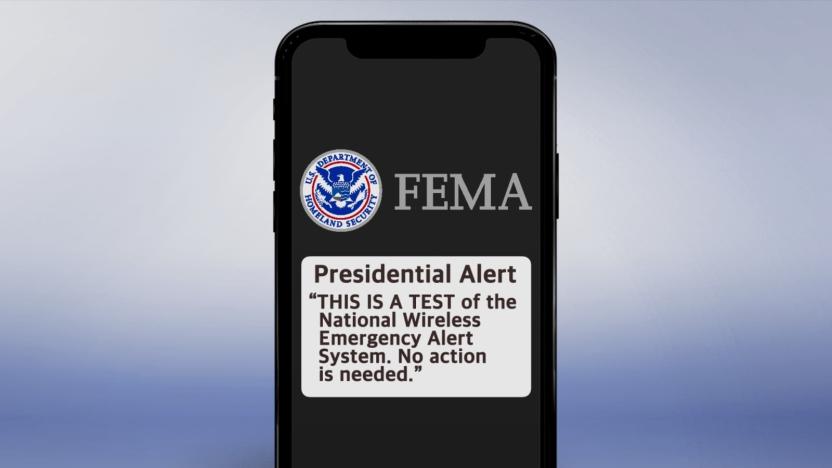
FEMA's presidential alerts are an easy target for spoofing attacks
Last fall, FEMA conducted the first nationwide test of its Wireless Emergency Alert (WEA) system when it beamed a "presidential alert" to all capable phones in the US. WEA has long been used to send alerts about missing children, natural disasters and other dangerous events. But a few years ago, the FCC voted to expand WEA so that, among other changes, government officials could write longer messages. Now, researchers from the University of Colorado Boulder warn that WEA's presidential alerts can be easily spoofed.
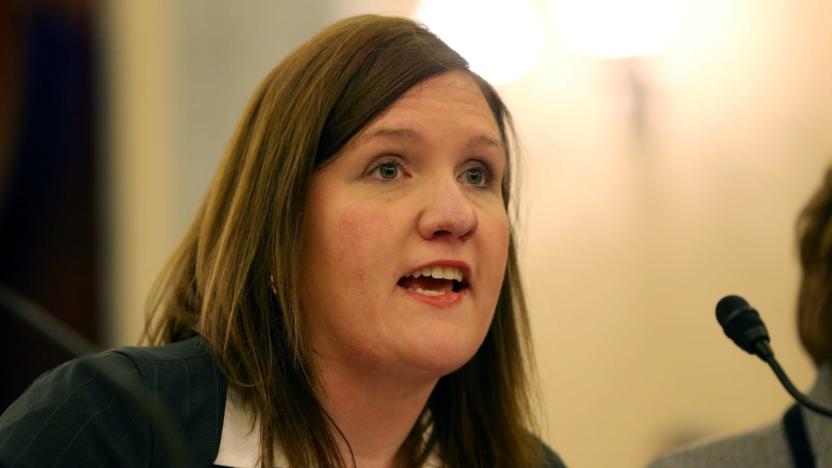
Shutdown means government won't engage with the tech industry at CES
It's not just FCC Chairman Ajit Pai who'll back out of CES as a result of the US government shutdown. The Consumer Technology Association has confirmed that at least ten government officials have cancelled their speaking engagements at the technology trade show "so far." It's not just FCC representatives like Pai or his compatriot Brendan Carr, either. The FTC's Rohit Chopra and Rebecca Slaughter (shown above) have backed out, as have officials from the EPA (Brandon Bray and Barnes Johnson), FDA (Bakul Patel), FEMA (Daniel Kaniewski) and Homeland Security (Andre Hentz).
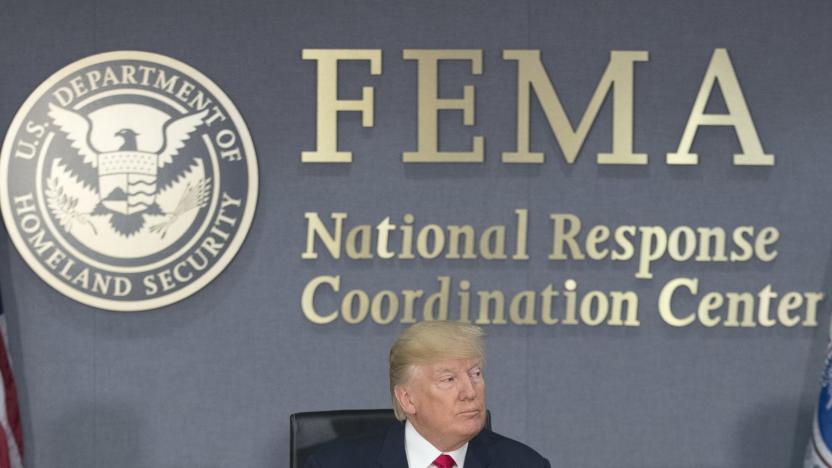
FEMA will test mobile Presidential Alerts today at 2:18PM ET
FEMA will conduct the first nationwide test of its Wireless Emergency Alert system today beginning at 2:18 PM Eastern. While you can choose to opt out of mobile weather and AMBER alerts, you won't be able to opt out of this test. When it happens, you'll see a notification on your phone with the header "Presidential Alert" and the message will say, "THIS IS A TEST of the National Wireless Emergency Alert System. No action is needed." Cell towers will broadcast the test for 30 minutes and any compatible phone that's on, within range of an active cell tower and connected to a wireless provider participating in WEA will receive the message.

FEMA postpones mobile ‘Presidential Alert’ test to October 3rd
FEMA announced recently that it would be conducting a nationwide test of the Emergency Alert System and Wireless Emergency Alerts (WEA). Both were initially scheduled to take place on September 20th, but FEMA said today that the WEA test has been postponed until October 3rd. The delay is due to severe weather stemming from Hurricane Florence and ongoing response efforts.
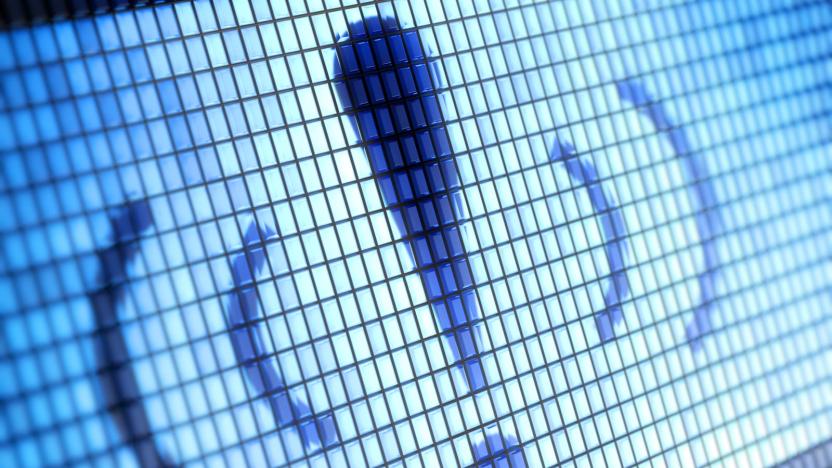
FEMA will test mobile 'Presidential Alert' on September 20th
Don't be surprised if your phone (and everybody else's) goes into a panic in the near future -- that's on purpose. FEMA and the FCC are conducting a national test of both the Emergency Alert System and Wireless Emergency Alerts on September 20th starting at 2:18PM Eastern. If you're included in the test, your device will receive a tone and a "Presidential Alert" warning that makes clear this is just a dry run. You can't opt out, and if circumstances make it inappropriate to send an alert, the test will be postponed to October 3rd.

Senate bill could bring emergency alerts to streaming services
You knew it was only a matter of time before legislators pressed for additional reforms to prevent another false missile alert like the one that rattled Hawaii. US Senators Brian Schatz and John Thune have introduced a bill, the READI Act (Reliable Emergency Alert Distribution Improvement), that would both reduce the chances of mistaken alerts and explore ways to bring those alerts to more people. It would "compel" FEMA to create best practices for emergency alert systems, encourage states to review their systems and create a false alert reporting method, but its most notable inclusion is the possibility of receiving alerts in more places -- including streaming services.

The West Coast is finally getting an earthquake early warning system
On September 19th, 1985, Mexico City was devastated by an 8.0 magnitude earthquake that killed as many as 30,000 people and leveled buildings across the city, including the 12-story Hospital Juárez, one of the oldest hospital institutions in Mexico. In response, the government set about creating the world's first earthquake warning system. One that, when an 8.1 tremblor set in on the city September 7th of this year, and a second 7.1 less than two weeks later, saved potentially tens of thousands of lives by giving them more than a minute's notice to head to safety. So why doesn't America have one along its Pacific coast as well? Turns out we almost do.
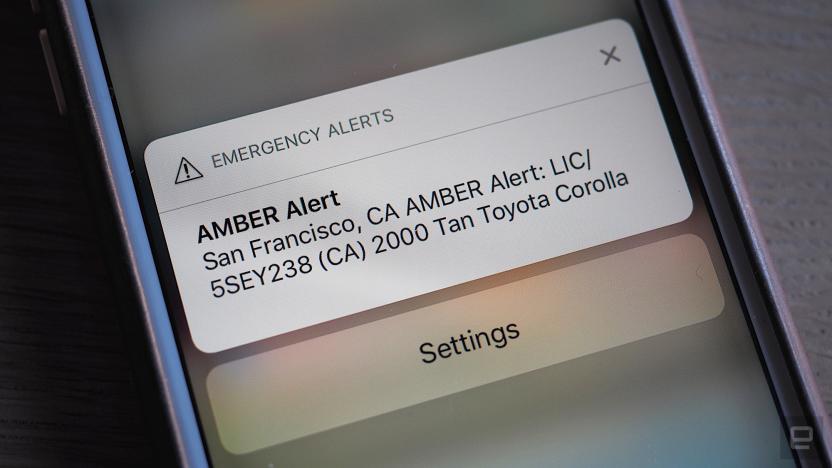
Everything you need to know about mobile Amber Alerts
At 2:38 PM on May 19th, 2017, my phone buzzed, emitting a high-pitched tone. So did the phone of my colleague Roberto Baldwin, who was standing with me inside a Starbucks near our office. Actually, all of the phones in that Starbucks buzzed at the same time, setting off a cacophony of synchronized alarms. An Amber Alert had just gone out for a missing 1-year-old child, last seen in a 2000 tan Toyota Corolla. Everyone in that Starbucks, and possibly the entire San Francisco Bay Area, saw the same message at the same time.
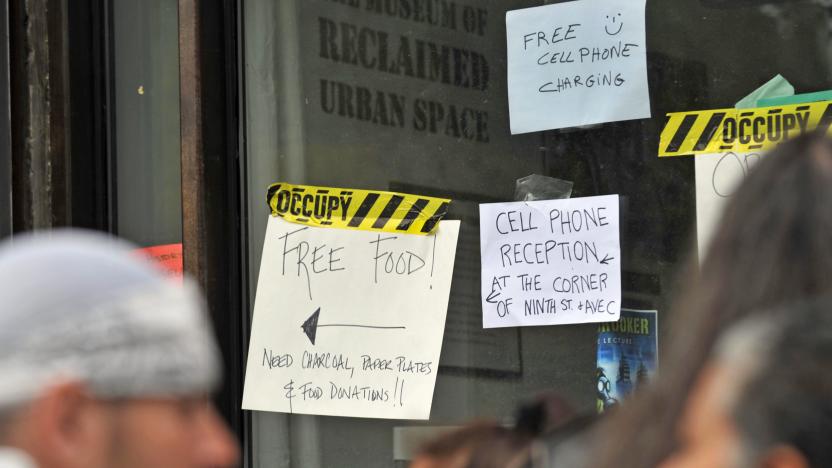
Google, Microsoft join government's disaster response program
People hit by storms and other disasters need more than food, clothes or shelter in the days following the unfortunate event. They also need access to working internet or cellular networks to find family and friends who (heaven forbid) might be missing or to get in touch with people who might be worried sick about them. Homeland Security's Federal Emergency Management Agency (FEMA) hopes to supply the need for tech-savvy volunteers who can help out in those situations. That's why it has launched the Tech Corps program and enlisted the help of several big-name companies in the industry, including Cisco Systems, Google, Intel and Microsoft.

Tiny tethered drone gives soldiers a view of the dangers ahead
Drones already give troops valuable data about enemies and devastated areas, but the existing vehicles have their limits; big aerial drones can't see inside buildings, and their ground-based counterparts can't get over rough terrain. Well, CyPhy Works might just have reached a happy balance between those two extremes. It recently signed a deal with the US Air Force to produce the Extreme Access Pocket Flyer, a very tiny UAV (it weighs just 2.8oz) that sends HD video to soldiers for up to two hours. The key to its portability is a 250-foot microfilament tether that delivers both power and data -- bulkier gear like batteries will stay with the soldier. This has the upshot of adding reliability and security, since there's no wireless signal subject to interference or jamming.

iPhone 101: Living dangerously with government alerts turned off
Given the surfeit of wild and life-threatening weather events across the USA over the past few months, it's great that the major iPhone carriers now all support the Federal system for wireless emergency alerts. These location-specific messages are broadcast by cell towers in an affected area, and provide brief messages that may help provide warning or guidance in a crisis. Verizon and Sprint both launched their capability in 2012, T-Mobile has the alerts enabled, and AT&T joined the parade last month approximately one year after the service was originally turned on. Note that emergency alert support is limited to the iPhone 4S and 5 models; neither Verizon or AT&T supports it on older handsets. (Thanks to John F. Braun for the reminder on the model restrictions.) As long as your handset is new enough and is running iOS 6.1 or later, the alerts -- which include both local weather/environmental "imminent threats" and missing-person AMBER Alerts, as well as the hypothetical Presidential announcement of an alien invasion or zombie attack -- are turned on by default. (I believe they also show up on cellular-capable iPads, but I'm not 100% certain about that.) The only problem with alerts that are on by default is that they don't have much awareness of your sleep schedule or other responsibilities, and as they deliberately use an unfamiliar alert tone, they can be quite startling... especially if a roomful of iPhones all pop an alert at once in the middle of a classroom, seminar or worship service. (I experienced this personally: flash flood warning, training class, several minor freakouts.) If, on your own recognizance and at your own risk, you should choose to turn off either the emergency or the AMBER alerts, the NY Times pointed out that it's easy enough to do (as did our own Yoni Heisler when AT&T's support kicked in). Simply go to the Settings app, tap Notifications, and swipe down to the relevant toggles at the bottom of the list. Where's the toggle for the Presidential alerts? Guess what, conspiracy theorists: they cannot be disabled, short of jailbreaking your phone. Clearly, when the time comes for us to be told where to report for our mandatory Google Glass corneal implant/PRISM uplink installation surgery, that's how we'll get the message. Now please kindly observe this brief public awareness video regarding the wireless emergency alert system. Your cooperation is much appreciated. And noted. On your permanent record. Thank you.

They have the technology? US government briefly shows iOS on a Lumia 920 (updated)
In a 30-second PSA about its wireless emergency alerts, the US government has adopted a similar approach to those fictional smartphone mash-ups we've seen on the TV. The ad shows those familiar WinPho buttons housed within a white polycarbonate Lumia 900 Lumia 920, paired with a less familiar iOS 6 lock screen. Now, as with those broody serials we love so much, we doubt there's any grounding in reality, but FEMA, somewhere, you're making a wishful Apple and Nokia fan's dreams (appear to) come true. Check it out after the break. Update: As very many of you have spotted, that distinct bottom can only belong to a Lumia 920, rather than the 900 as we originally reported. We stand corrected!

FEMA and National Weather Service launch Wireless Emergency Alert System
While it's a little later than expected, the free SMS emergency notification system has now gone live. Wireless Emergency Alert (WEA) messages will be delivered to cell towers in affected areas, which will then broadcast them to all compatible devices in their range. While the system is looking to cover over 97 percent of the country, it's being gradually rolled out across carriers. Sprint and Verizon are both apparently ready for action and while we haven't heard about the status of T-Mobile or AT&T, the National Weather Service has stated that hundreds of smaller carriers haven't yet enabled the broadcasts. However, not all phones -- especially the more elderly bricks still in circulation -- will work with the system. To check whether your weighty cellular still passes muster, hit up the compatible device list at the CTIA link below.

Daily Update for June 28, 2012
It's the TUAW Daily Update, your source for Apple news in a convenient audio format. You'll get all the top Apple stories of the day in three to five minutes for a quick review of what's happening in the Apple world. You can listen to today's Apple stories by clicking the inline player (requires Flash) or the non-Flash link below. To subscribe to the podcast for daily listening through iTunes, click here. No Flash? Click here to listen. Subscribe via RSS

Wireless Emergency Alert system goes live this month, delivers location-based SMS warnings
Last we heard of the federal government's Wireless Emergency Alert system, only Sprint had signed on to deliver the SMS warnings. Now, with the secured participation of all four major carriers and smaller regional operators, that gratis service is set to go live this month, covering nearly 97 percent of active mobile users. Using a "point-to-multipoint system" that targets at-risk subscribers, the National Weather Service, FEMA, FCC and Department of Homeland Security-backed initiative works by sending location-based messages of 90 characters or less to nearby handsets in the event of an imminent meteorological threat. The mostly opt-out service will also accommodate AMBER and Presidential alerts, although you won't have that flexibility for missives sent from our head of state. So, the next time your phone gives off a strange auditory tone, you'll know to head for shelter.

Sprint plans Emergency Alert messaging system in New York City, claims this is only a test
Know those emergency alerts that always seem to crop up when your sports team of choice is about to score a crucial goal? Yeah, well they're headed to a Sprint phone near you, signature auditory tone and all. After successfully testing the service in San Diego last fall, the carrier's gearing up for round two of the FCC and Mayor Bloomberg-approved system in New York City later this year, issuing FEMA alerts from the President, National Weather Service and local emergency operators to over a dozen compliant Android phones. If you're sporting a compatible handset, you can opt-in for the service by either dialing ##CMAS## or selecting the appropriate settings prompt, after which you'll receive geographically-specific texts of up to 90 characters. And don't worry about dismissing these warning messages as any 'ol SMS or racking up additional fees, they'll arrive free-of-charge bearing a unique "vibration cadence" and inbox icon. Curious to see if your phone's made the cut? The skip on past the break for the official PR.











